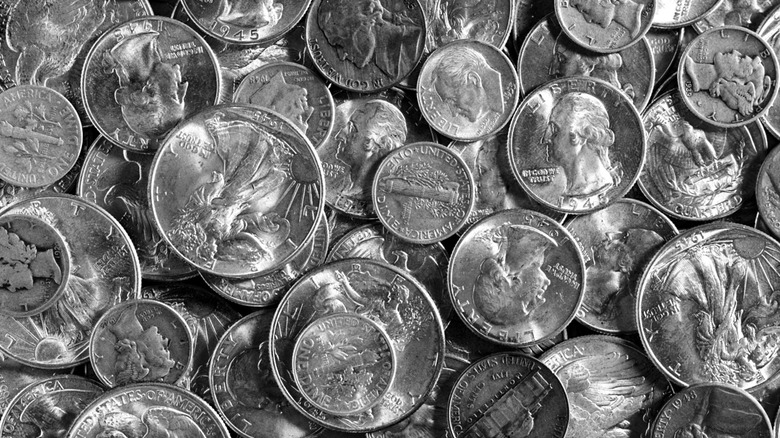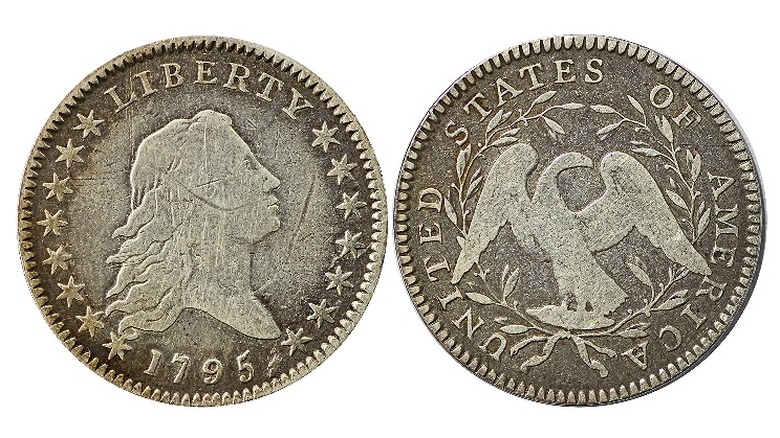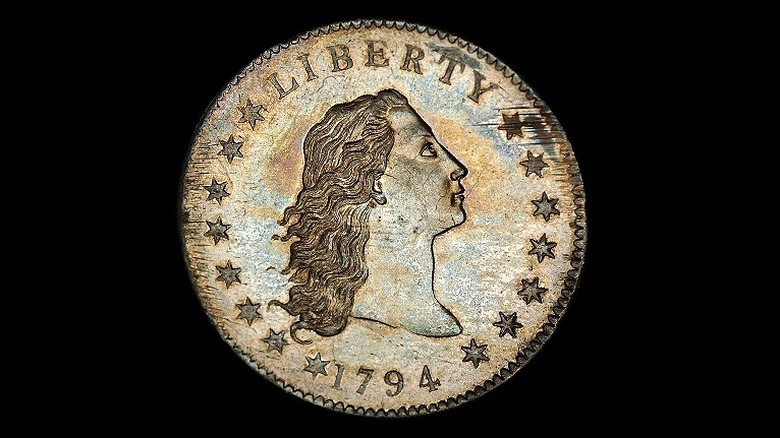The Silver Dollar Coin That's Worth A Ton Of Money
The silver dollar: it's not just a theme park in Missouri, or an old-timey reference in a 1985 Oingo Boingo song. It's legal U.S. tender — or, at least it was, for a time. The United States started minting dollar coins from silver in 1794, but they were intended as gifts, not spending money. The heyday of the silver dollar ran from 1878 to 1978, and in that time, per the U.S. Mint, three different coins were issued, although falling demand and a dwindling silver supply severely curtailed the dollar's popularity after World War I.
The first two silver dollars minted during that 100-year period, the Morgan (1878 to 1904) and the Peace (1921 to 1928, with brief runs after), are some of the most famous U.S. coins among today's collectors. The Morgan has a particular association with the American West and enjoys a great deal of popularity with collectors, in part because it's a relatively affordable purchase. However, that can't be said for the original silver dollar, sometimes known as the Flowing Hair for its obverse design that features Lady Liberty. One such dollar set the world record for money spent on a coin when it sold at auction for $10 million in 2013, and was auctioned off again for the even larger sum of $12 million in 2022 by GreatCollections.
Only around 140 of the original Flowing Hair dollars exist today
The 1794 "Flowing Hair" silver dollar was never intended for circulation. At the time it was struck, the U.S. was still settling its economy after the War of Independence and had limited supplies of precious metals. The purpose of the Flowing Hair dollar wasn't to create spending money, but to demonstrate the new nation's ability to mint its own coinage. To that end, all 1,758 of the dollars were given away to foreign dignitaries, according to the National Museum of American History.
Unfortunately, the minting process suffered from some technical difficulties. The press used wasn't designed for coins of the intended size, and in order to make a substantial-enough impression on the silver, the pattern had to be struck twice. The resulting coin didn't do much to impress the dignitaries, and it didn't translate into any Flowing Hair dollars in circulation. (Speaking of minting, here's why pennies cost more to make than they're worth.)
In 2020, Douglas Mudd, the curator and director of the Edward C. Rochette Money Museum, told CNN that only 130 to 140 Flowing Hair dollars from the original mintage still existed, making them a prized find for collectors. The Flowing Hair that went for $12 million has additional value for being in such good condition. GreatCollections, the Irvine, California-based auction house that bought the coin in 2022, described it as being of superior quality to the Flowing Hair kept by the Smithsonian. (See what valuable coins you might have lying around your home.)
Flowing Hair medals have been minted for coin collectors
With only about 140 Flowing Hair silver dollars around, it's not surprising that they're valued highly, even if they don't all meet the $12 million figure. Coin-grading service PCGS has tracked the sales of Flowing Hairs, and found that prices range from around $36,000 to over $2 million. Even the low end of that range is fairly expensive for many collectors. But if you value the design of the coin over its age, the U.S. Mint has you covered.
In 2024, to commemorate the 230th anniversary of the first Flowing Hair dollar mintage, the U.S. Mint announced it was offering a silver medal and a gold coin, both struck from a recreation of the original silver dollars of 1794. The design featured 15 stars around Lady Liberty on its obverse and a nesting eagle on the reverse, along with the words "United States of America." As of October 2024, neither the medal nor the coin were available, though the silver medal had a listed catalog price of $104. (Find out why the Kennedy half dollar is worth a ton of money, too.)


